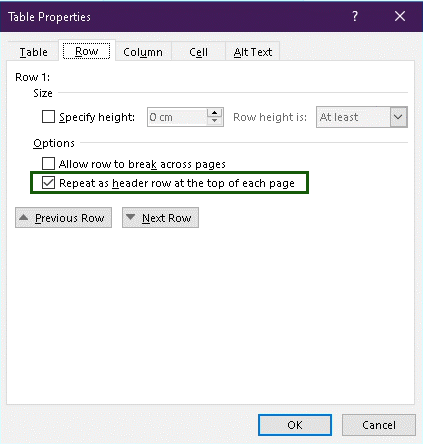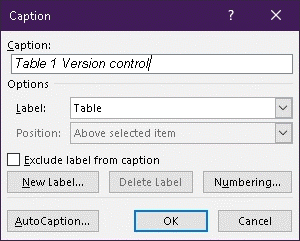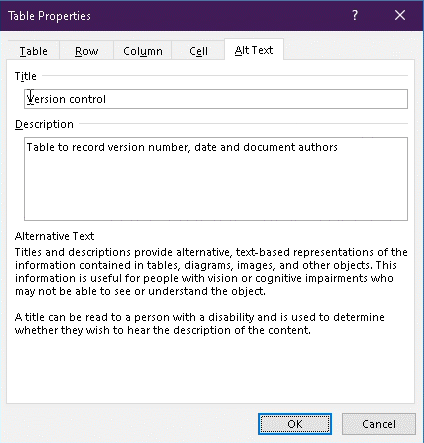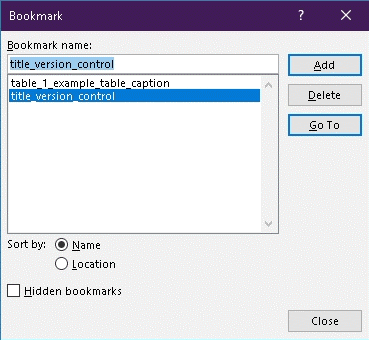How to make tables accessible
Tables should only be used for data and not for the layout of content. Do not put text in a table to make it look 'important' or 'official', like this:
| What is mental health? |
| Mental wellbeing does not have one set meaning. We might use it to talk about how we feel, how well we are coping with daily life or what feels possible now. Good mental wellbeing does not mean you are always happy or unaffected by your experiences. But poor mental wellbeing can make it more difficult to cope with daily life. |
When creating a table two new tabs appear in the ribbon. Select the Design tab to reveal the Table Styles Option group. Here you can select the style of table below Plain Table 1.
Table 1 Example accessible table
| Phase | Description | Status |
| Design and planning phase | Plan with relevant teams | Complete |
| Develop and test phase | Carry out the relevant tests to check the accessibility of the document | In progress |
To make a table accessible you must:
- Identify which row contains the column headers.
- Give the table a caption, title and description and add a bookmark to the table.
- Try to avoid overly complex tables. If required, consider whether you should split them into two tables or find another way to represent the information.
- Ensure no merged, split, or blank cells are used.
- Do not cram a table full of text - this content should be read and displayed in a linear format instead.
To check the accessibility of your tables, try navigating all the way through using only the Tab key. If you can navigate through the table this way - cell by cell and row by row - a screen reader should have no trouble with it.
Identify which rows contain the column headers
Step one

Click inside your table and click Design tab under Table Tools group.
In the "Table Style Options" group, make sure Header Row, First Column, and Banded Rows is checked. Banded Columns can also be checked but is optional.
Step two
- Select the row with the column headers and right click
- Select Table properties to bring up the table properties dialog.
- Click the Row tab and check the checkbox that says Repeat as header row at the top of each page.
- Uncheck Allow row to break across pages

Give the table a caption
- In the Ribbon, select Reference tab, then select Insert Caption
- In the dialog window, type the title of the table in the Caption
- In the Label select Table if it isn’t already select. Then click OK.

Give the table a title and description
- Right click on the table and select Table Properties.
- In the dialog, select Alt Text
- Add a Title and a Description for your table and select OK

Add a table bookmark
- Place the cursor inside the first table cell.
- In the Ribbon, select Insert tab, then select Bookmark.
- In the Bookmark name textbox, type Title then name of your table. Use underscores instead of spaces. For example, a table displaying version control you would add name

